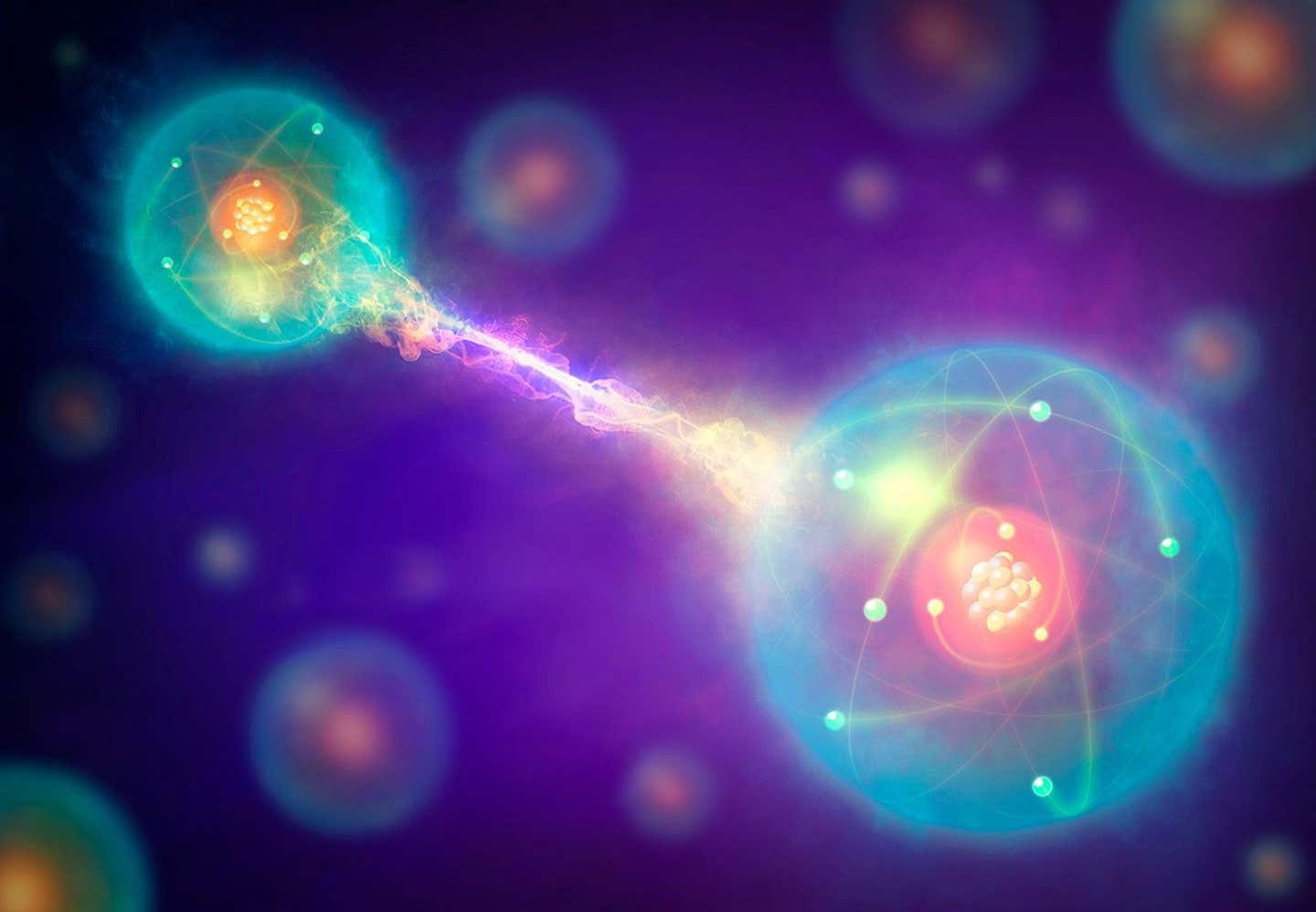Neuroscientists discovered how memories are stored in the brain
The mechanism behind the brain’s ability to learn and remember the world around us has long captivated the curiosity of scientists.

[Nov. 22, 2023: JJ Shavit, The Brighter Side of News]
The mechanism behind the brain's ability to learn and remember the world around us has long captivated the curiosity of scientists. (CREDIT: Creative Commons)
In the intricate complexity of the human brain, a fascinating dance of cells and synapses continually unfolds, allowing us to learn and remember the world around us. The mechanism behind this remarkable ability has long captivated the curiosity of scientists.
Now, groundbreaking research led by Dr. Tomás Ryan and his team of neuroscientists at Trinity College Dublin has shed light on the intricate process of memory formation, revealing that learning involves the continuous formation of new connectivity patterns between specific engram cells in different regions of the brain.
Our brains are dynamic organs, constantly in flux due to the multifaceted processes of growing up, aging, degeneration, regeneration, everyday experiences, and learning. It is within this ever-changing landscape that memories take root. The challenge for scientists has been to pinpoint the "difference that makes a difference" in the formation of a memory—an elusive change in the brain known as an 'engram,' which stores information for later use.
The recently published study, featured in the prestigious international journal Current Biology, sought to unravel the enigmatic process of engram formation in the brain.
Related Stories
Dr. Clara Ortega-de San Luis, a Postdoctoral Research Fellow in the Ryan Lab and the lead author of the study, eloquently describes engram cells as "groups of brain cells that, activated by specific experiences, change themselves to incorporate and thereby hold information in our brain." These memory engram cells serve as the foundation for our recollection of past experiences. The pivotal question driving this research was, "How do engrams store meaningful information about the world?"
To dissect and understand the intricate changes that engram cells undergo to encode a memory, the research team delved into a form of learning where two similar experiences become intertwined due to their content. Their experimental approach involved labeling two distinct populations of engram cells in the brain, each associated with discrete memories. They then closely observed how learning triggered the formation of novel connections between these engram cells.
The team harnessed the power of optogenetics, a groundbreaking technique that allows the manipulation of brain cell activity using light. Through optogenetics, they demonstrated that these newly formed connections were essential for the learning process. In a remarkable discovery, the researchers identified a molecular mechanism mediated by a specific protein located in the synapse—the junction where nerve cells communicate—that played a pivotal role in regulating the connectivity between engram cells.
Engram Cell Connectivity. Schematic illustrating the dynamics of synaptic connectivity in a neural ensemble recruited during the formation of a new memory. (CREDIT: Research Gate)
This groundbreaking study offers compelling evidence for changes in synaptic wiring connectivity between engram cells as a likely mechanism for memory storage in the brain. Dr. Ryan, an Associate Professor in Trinity's School of Biochemistry and Immunology, Trinity Biomedical Sciences Institute, and the Trinity College Institute of Neuroscience, emphasizes the significance of understanding the cellular mechanisms that underpin learning.
He states, "In 21st-century neuroscience, many of us like to think memories are being stored in engram cells or their sub-components. This study argues that rather than looking for information within or at cells, we should search for information between cells, and that learning may work by altering the wiring diagram of the brain—less like a computer and more like a developing sculpture."
"In other words," Dr. Ryan concludes, "the engram is not in the cell; the cell is in the engram."
Memory Formation: A Dynamic Process
Learning and memory formation are fundamental to our everyday lives. Whether we consciously seek to acquire new knowledge or simply absorb information incidentally, our brains are perpetually engaged in the intricate dance of forming and storing memories. From navigating our environment to interacting with others or consuming media content, our brains continually process information, creating the foundation for our recollections.
The intricate process of memory formation has intrigued scientists for centuries, leading to numerous theories and hypotheses about how the brain accomplishes this remarkable feat. However, it is only in recent years that advances in neuroscience have allowed researchers to delve deeper into the intricacies of memory engrams—the elusive neural signatures of specific memories.
Memory engram cells are clusters of brain cells that undergo a transformative process when activated by specific experiences. These cells alter their structure and connectivity to incorporate and retain information in our brains. Crucially, the reactivation of these "building blocks" of memories triggers the recall of the specific experiences associated with them. This phenomenon raises a critical question: How do engrams store meaningful information about the world?
Engram Labeling Technology and Memory Retrieval in Retrograde Amnesia. Basic composition of the engram labeling system. (CREDIT: Research Gate)
A Molecular Mechanism at the Synapse
Further exploration led the research team to uncover a molecular mechanism that plays a critical role in regulating the connectivity between engram cells. This mechanism, located at the synapses—the junctions where nerve cells communicate—serves as a crucial conductor in the symphony of memory formation. It orchestrates the intricate dance of engram cells as they adapt to incorporate new information, ultimately creating the foundation for our memories.
Dr. Ryan, the lead researcher on the project and an Associate Professor in Trinity's School of Biochemistry and Immunology, Trinity Biomedical Sciences Institute, and the Trinity College Institute of Neuroscience, underscores the significance of these findings. He suggests that our traditional view of memory storage within engram cells may need a paradigm shift. "Rather than looking for information within or at cells," he explains, "we should search for information between cells, and that learning may work by altering the wiring diagram of the brain."
Engram labelling technology and memory retrieval in retrograde amnesia. (A) The promoter of the immediate early gene (IEG) drives expression of tTA in an activity-dependent manner. (CREDIT: Research Gate)
Dr. Ryan's insight challenges our conventional understanding of memory storage. Instead of considering memories as static entities within individual cells, he suggests that we should think of them as dynamic, ever-changing patterns of connectivity between engram cells. This perspective likens memory formation to the creation of a sculpture, where each connection between cells contributes to the intricate and evolving masterpiece.
In essence, Dr. Ryan's research suggests that the engram is not confined within the cell itself but is a complex web of connections that extends throughout the brain. This perspective opens up new avenues for understanding memory, learning, and cognition in the human brain.
Note: Materials provided above by The Brighter Side of News. Content may be edited for style and length.
Like these kind of feel good stories? Get the Brighter Side of News' newsletter.
Joseph Shavit
Head Science News Writer | Communicating Innovation & Discovery
Based in Los Angeles, Joseph Shavit is an accomplished science journalist, head science news writer and co-founder at The Brighter Side of News, where he translates cutting-edge discoveries into compelling stories for a broad audience. With a strong background spanning science, business, product management, media leadership, and entrepreneurship, Joseph brings a unique perspective to science communication. His expertise allows him to uncover the intersection of technological advancements and market potential, shedding light on how groundbreaking research evolves into transformative products and industries.



